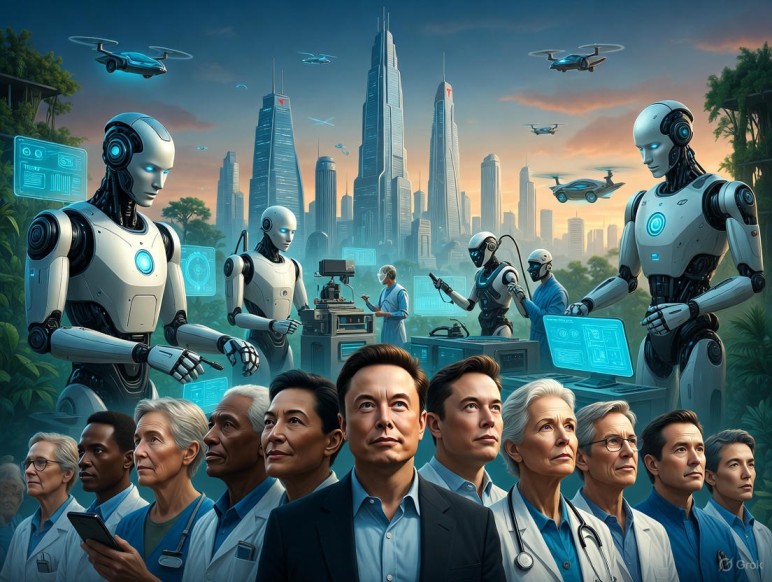Elon Musk’s Bold Plan to End Poverty With Robots and Shared Prosperity

Elon Musk has unveiled a sweeping vision of a future where advanced humanoid robots handle the bulk of global labor, freeing humans from traditional work and potentially ending poverty. Speaking about the rapid progress in robotics and AI, Musk argued that the economic benefits created by automated labor could be redistributed as a universal prosperity package. The idea marks one of his most ambitious attempts yet to tie breakthrough technology to social transformation.
Background / Context
Musk has long warned that AI and robotics could displace millions of jobs, from factory floors to administrative roles. At the same time, he has argued that automation — if managed responsibly — could create unprecedented economic abundance. With Tesla developing Optimus, a general-purpose humanoid robot, Musk is expanding that argument into a broader socio-economic proposal: robots produce the wealth, and people enjoy the dividends.
Key Developments / Details
- Humanoid Robots as the New Workforce: Musk claims that Tesla’s Optimus platform is advancing toward performing many repetitive, physical, and low-skill tasks currently done by human workers.
- Economic Surplus Generated by Automation: According to Musk, once robots can produce goods and services at extremely low marginal cost, societies could redistribute this surplus to guarantee a baseline income or universal prosperity fund.
- Reduced Human Workload: In this vision, humans work by choice, not necessity. Musk predicts a shift toward creative, strategic and emotional labor that robots cannot easily replicate.
- Technology as a Social Lever: Musk positions automation not as a threat but as a tool that could radically improve quality of life if governments build the right economic frameworks.
Technical Explanation
Humanoid robots like Optimus combine:
- AI perception systems that let them understand surroundings,
- Dexterous actuators that mimic human movement, and
- Neural network–powered learning loops that improve performance over time.
Think of them as extremely capable “general-purpose machines.” If such robots reach cost efficiency similar to mass-produced consumer electronics, their ability to perform labor at scale could create vast economic output with little human input.
Implications
- For workers: Automation could shift society away from labor-driven income toward shared economic models such as universal basic income (UBI) or national prosperity funds.
- For governments: Policymakers would need to rethink taxation, welfare, and redistribution to manage an economy where machines create most of the value.
- For industries: Manufacturing, logistics, retail, healthcare and domestic services could undergo complete transformation as humanoid robots replace human labor in routine tasks.
- For society: If implemented ethically, Musk’s vision could reduce poverty, increase leisure time, and expand access to essential services.
Challenges / Limitations
- Economic Feasibility: Large-scale redistribution depends on political consensus and sustained economic surplus — both uncertain.
- Ethical Concerns: Concentration of robot ownership could worsen inequality if wealth accumulates in the hands of a few corporations.
- Technological Hurdles: Humanoid robots must reach reliability, safety and affordability levels far beyond today’s prototypes.
- Social Resistance: People may resist rapid job displacement or distrust automation in sensitive environments.
- Regulatory Gaps: Most countries lack policies covering robot labor, AI liability, or automated economic contribution.
Future Outlook
If Tesla and other robotics companies continue accelerating development, humanoid robots could enter mainstream industries in the next decade. Discussions around universal income models, taxation of automated labor and robot-human collaboration will only intensify. Whether Musk’s plan becomes reality depends not just on engineering breakthroughs — but on political, social and ethical choices made globally.
Conclusion / Summary
Musk’s high-tech anti-poverty vision blends robotics, AI and economic reform into a bold and controversial proposal. While the technology is advancing rapidly, turning automation-driven abundance into shared human prosperity will require careful policy design and global cooperation. Still, the idea marks a crucial shift in how we think about work, wealth and the role of intelligent machines.